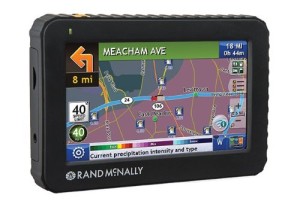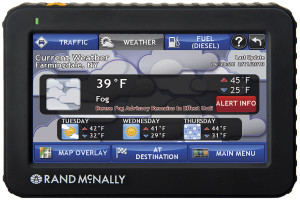APU, Auxiliary Power Units, Generators. They go by a variety of names but they all solve the same problems. Saving money while increasing truck driver comforts when stopped for long periods of time. Most over the road trucks now include many amenities to make the truck a more tolerable environment on month long cross country dispatches. The days of having a small bunk and limited storage for the truck driver is no longer acceptable. To recruit and retain truck drivers, companies are forced to spend money on rigs with many amenities. And lets not for a minute think that they companies are doing this because they want to – for unless the rig is operated by the owner, there are few companies that would lay out the expenses for these luxury accommodations. Well, at least luxury compared to 30 or more years ago.
Today’s common 60″ condo sleeper unit was considered a ridiculous overstatement 30 years hence, but now, most drivers not getting such amenities will feel insulted, unwanted and may just refuse to make a career out of a job with that company. Owner operators or team operations appreciate the extra space of 70 plus inch units.
Of course, what good is all that extra space if all you do is store stuff? Small refrigerators, TVs with DVD players, radios and music CD players and microwaves are not uncommon. And that is on top of climate control providing heat and cooling. All of these amenities require power. The cost of idling the truck’s engine can cost upwards of a one gallon an hour, plus additional wear & tear maintenance. Thus just idling the your unit for a 10 hour break can easily cost you $40 or more in bottom line profits. Spend the weekend on layover for a Monday morning pickup and your costs can be substancial. With Truck Stop Electrification limited available at limited locations, the economical solution is a APU or Auxiliary Power Unit.
Auxiliary Power Units
There are many manufactures of APU or generator units and I will not be able to cover them all. I welcome any companies or representatives that work with Auxiliary Power Units, to provide additional information on their company’s products. Is a few of the units available. I have no personal knowledge of these units.
The Dynasys APU
: With a Dynasys auxiliary power unit (APU), drivers can maintain in-cab comfort without the noise, vibration and expense of idling. Operating costs are reduced. And compliance with anti-idling laws is achieved as an added bonus.
Externally mounted on the truck rail, Dynasys is protected in its own weatherproof enclosure and operates using the truck’s fuel supply. This compact, diesel-electric system provides dependable comfort for the driver during downtimes, reduces emissions, and dramatically lowers fuel costs during idling. An optional shore power feature also allows the driver to power the truck’s HVAC from any 110v outlet to work independently from the APU. Financing may be available.
Rigmaster Power
Provides sleeper heating & air conditioning, 120 VAC power, fits on most Class 8 trucks, can power existing block heaters.
Turn off your engine and turn on a Rigmaster. Higher fuel prices and reduced truck engine efficiencies due to changing EPA requirements and the adoption of ULSD have all worked to create a challenging operating environment for fleets and owner operators. The RigMaster APU will relieve growing operating costs and stabilize the risks of a volatile market.
RigMaster Power is a complete stand-alone Auxiliary Power Unit that runs all night on what your idling truck engine burns in two hours.
I will amend this posting if provided information on other units.
Happy Trucking, John







